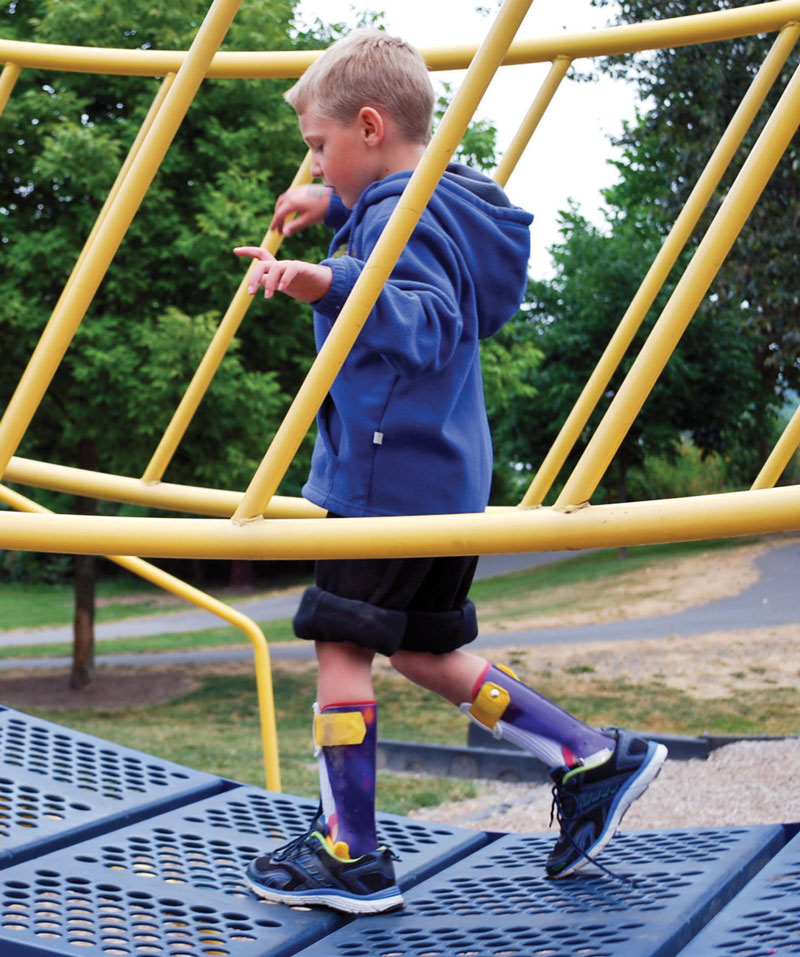Stability for CP: AFOs benefit diplegic children
In children with diplegic cerebral palsy (CP), wearing bilateral ankle foot orthoses (AFOs) that promote heel-first ground contact helps to improve stability and may reduce the risk of falls, according to research presented in March at the annual meeting of the American Academy of Orthotists and Prosthetists (AAOP) in Orlando, Florida.

Cascade DAFO photo.
By Jordana Bieze Foster, Lower Extremity Review April 2016
In 191 children with diplegic CP, investigators from Gillette Children’s Specialty Healthcare in St. Paul MN, found that walking in bilateral AFOs was associated with a significantly greater margin of stability (MoS) in the backward direction — which is important when transitioning from one limb to another—compared with walking barefoot.
Importantly, the mean backward MoS for the children with CP while wearing AFOs did not differ significantly from the mean value for 76 typically developing children.
“This is where I started jumping up and down,” said Michelle Hall MS CPO, a prosthetist-orthotist at Gillette, who presented the results of the Thranhardt Award-winning study at the AAOP meeting. “This is a clinically meaningful change, and I think as a clinician it makes intuitive sense.”
The MoS measure is the distance between an individual’s base of support and their extrapolated center of mass (which accounts for both position and velocity). During forward walking, a negative mediolateral MoS will cause the individual to deviate from a straight line; a negative backward MoS will interrupt forward progression.
“Margin of stability helps to explain why balance can be maintained, even if the center of mass is outside the base of support, as long as it’s inside the extrapolated base of support,” Hall said.
The children with CP, whose ages ranged from 6 to 18 years, all wore matching bilateral thermoplastic custom-molded AFOs with their own footwear. Forty-six of the children wore hinged AFOs, 90 wore posterior leaf spring devices, and 35 wore solid-ankle devices. All but two were community ambulators based on the parent-reported Gillette Functional Assessment Questionnaire.
All of the AFOs were designed with a plantar flexion stop to position the foot for heel-first contact while walking, rather than the toe-first contact that is typical of children with diplegic CP, Hall said. MoS was normalized to leg length.
Mean mediolateral MoS for the group of children with CP was about 7% lower when they wore the AFOs than when they walked barefoot, which Hall said she did not think was a clinically meaningful difference, particularly since the mean mediolateral MoS associated with AFO use still differed considerably from the mean mediolateral MoS for the typically developing children.
Mean backward MoS for the children with CP was about 20% higher when they wore the AFOs than when they walked barefoot. As mentioned earlier, the mean backward MoS for AFO use did not differ significantly from the backward MoS for the typically developing children.
The backward MoS findings suggest AFO use helps to improve balance in children with diplegic CP and may, in turn, help to reduce the risk of falls, Hall said.
In future work, the researchers would like to look at the effects of stride length—which has been associated with MoS in other populations—and optimizing the footwear-shank angle during AFO use for each child, she said.
Hall noted, however, that a single stability measure is unlikely to wholly reflect the complexities of dynamic balance in children with diplegic CP.
Source Lower Extremity Review
| References |
Margins of stability in children with cerebral diplegia: barefoot vs AFO comparison, Hall MJ, Schwartz, MH. Paper TL1. Presented at the American Academy of Orthotists & Prosthetists 42nd annual meeting in Orlando FL, March 2016.
| Further reading |
The condition for dynamic stability, Hof AL, Gazendam MG, Sinke WE. J Biomech. 2005 Jan;38(1):1-8
